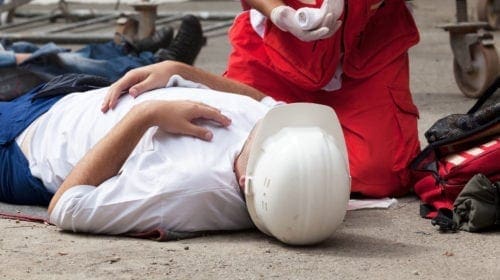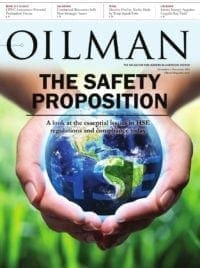Effective leadership in business is a critical element in achieving and maintaining success. Smart businesses constantly work on improving and developing

leadership skills within their organizations to maintain a position of strength in the industry.
One area we sometimes neglect identifying leaders in is the area of safety. When we think of safety leadership within an organization, we assume top management is leading the charge. The reason we make this assumption is because they develop the corporate vision, define the strategic direction and provide the resources to support corporate safety initiatives.
To fully understand safety leadership, we need to look beyond top management. There are three types of safety leaders in every organization – the unidentified leaders, the influencers, and the real safety leaders within the organization. These employees have great influence on production and safety efforts in positive and negative ways.
Here is an example a consultant shared with me several years ago. He was working with a manufacturing plant where employees were not wearing safety glasses and steel toe boots.
The plant had a number of accidents and injuries, and in every case affected personnel refused to wear their safety gear. Management could not get full compliance no matter how hard they tried to influence their employees. After meeting with management to discuss their frustration, he decided to meet with employees to gain a better understanding of why they would not comply with the safety rules.
During his meetings with employees, he discovered their refusal to comply was because their coworker Mary (unidentified leader) did not wear her safety glasses or steel toe boots.
When he met with Mary and asked her why she refused to comply with the safety rules, she responded that management always communicates to the employees the benefits of compliance with safety rules. She said if management would communicate the benefits of wearing safety gear to employees and show sincere concern for employee welfare she would gladly follow the safety rules.
The consultant convinced management to do just that. Within a month there was full safety gear compliance throughout the plant.
Safety leaders known as influencers can be management or non-management personnel. Influencers are people who others follow because they are inspired by them. They have great energy, are engaging and have a sincere concern for the well-being of the people they work with. These leaders help the people who follow them to see the value of doing the job correctly and safely.
Finally, there are true safety leaders in the organization. True safety leaders set the pace and drive the safety process. They lead by example and provide great direction for all personnel to follow. True safety leaders also have a great concern for their fellow employees and work hard to keep everyone safe on the job.
Contrarily, ineffective safety leaders in the organization can adversely affect not only safe production, but the performance of the entire organization.
Ineffective safety leaders promote unsafe behaviors which can result in more incidents/accidents, lost work days due to injuries, and the potential for an increase in insurance and production cost. Ineffective safety leaders can also be a catalyst for negativity in both production and employee morale. These increases in negative effects can hinder an organization’s ability to stay competitive in the market place.
To have an effective safety initiative for the long term, we need to identify our unidentified leaders, influencers, and true safety leaders in the organization. Top management cannot simply mandate safety performance and expect the safety initiative to succeed. Every organization needs employees and leaders engaging and buying into the safety program for it to be effective long term.
We need to understand what motivates each of these leaders to move in a positive direction. Once we understand their motivation, we can cultivate their leadership to assist the organization in creating a safer and more productive work environment. We need to ensure our employees and leaders feel we truly value their work, we value their ideas and we genuinely care about them. If we can achieve this, we will be more successful as an organization and more successful at providing a safer workplace for everyone.
Dwight D. Eisenhower once said, “Motivation is the art of getting people to do what you want them to do because they want to do it.” Safety leaders are the cornerstone for motivating, not only safe behaviors, but setting the standard of why every employee matters and how they drive success of the organization.
Richard Perkins, CSP, is the safety services manager for LWCC. Headquartered in Baton Rouge, La., LWCC is a private nonprofit mutual insurance company that is rated “A” (Excellent) by A.M. Best Company. As the largest writer of workers’ compensation insurance in Louisiana, LWCC employs over 240 people and serves approximately 20,000 policyholders in the state. Named to the 2017 Ward’s 50 group of top-performing insurance companies, LWCC was recognized for achieving outstanding results in the areas of safety, consistency and performance over a five-year period, 2012–2016. For more information, please visit www.lwcc.com.











